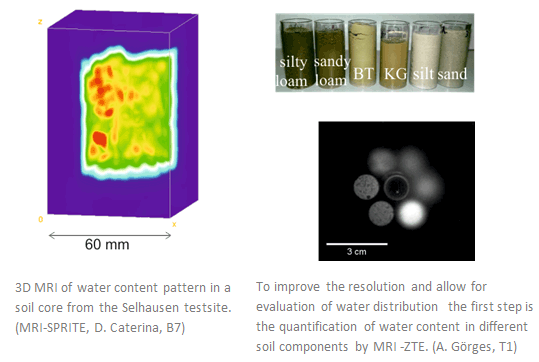MRI pulse sequences with ultra-short detection for imaging of transport in soils




Research Area:
Soil physics

MRI is a non-invasive method for visualization of liquids like water in natural porous media. It is capable to map water contents as well as water flow, diffusion and solutes. However, conventional MRI is hampered by inherently short relaxation times in soils, e.g. for a sandy soil T2 is 2 to 10 ms.
A way out of this are MRI pulse sequences with ultra short detection times like SPRITE (single point ramped imaging with T1 enhancement), UTE (ultrashort echo time) or ZTE (zero echo time). So far, such methods have not been used on soil cores and in combination with tracer tracking methods.
Aims:
This transfer project shall make a strong link between applied science and economy, in this case Bruker Biospin (Rheinstetten, Germany), one of the world leaders in MRI scanner development. We will adapt existing pulse sequences for soil water processes by systematic assessment of pulse sequence parameters to explore the limits in terms of image quality, resolution, and detection limits.
The implementation of the selective rf excitation by Frank-functions (Amor et al. JMR 2011) will allow to reduce further the critical time gap between excitation and detection. All methods will be tested on an artificial and several natural soil cores from the Rur catchment, where water contents and flows should be mapped.
Cooperation partners:
Projects: B4, B6, B7, B8, Z4, D7